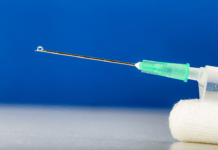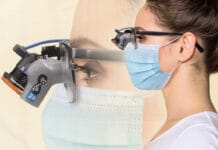I just started my first dental hygiene job, and I’m having a hard time on how to suggest perio treatment and referrals. What’s the best way to explain perio to a patient and how to stress the importance not to leave deep pocket depths and bleeding untreated?
With time, the more patients you see and explain the need for referrals and perio treatment to, explaining will soon become like second nature. With each patient, you may need to tweak your explanation a bit depending on the level of understanding each patient has based on their individual needs. Individualizing your explanation is key. Knowing this will come with time as well.
I like to explain what periodontal disease is and the need for treatment kind of like this: Your mouth is full of bacteria, both good and bad. The longer the bad, disease-causing bacteria are left undisturbed, or not broken up, by brushing or cleaning in between teeth properly, they can cause a gum infection. Bleeding and puffy, inflamed gums are the first signs of infection by this bacteria. This is gingivitis; gingivitis is reversible with treatment and proper oral health care on your part, at home. However, if this bacteria continues to go undisturbed and not removed, it gets even stronger – more virulent. This can cause the breakdown of the supporting structures of the teeth; such as bone, ligaments, and gum tissue. Once bone and tissue break down, it doesn’t grow back. This is called periodontitis, and left untreated, it may cause your teeth to become loose, gums to recede, and possibly even lead to tooth loss. The good news is, with periodontal treatment, periodontitis can be halted and maintained. Note: I tend not to get into how it’s the immune system trying to fight periodontal pathogens that’s actually causing attachment loss because that tends to get to be a bit more information than is really needed. This is, of course, depending on the patient’s level of understanding. If it’s someone in healthcare (EMT, nurse, doctor, etc.), this could be something to add. Just be mindful of overloading a patient with information.
When educating on the difference between gingivitis and periodontitis, you can bring the patient’s periodontal chart measurements to the conversation. Using specific examples from the patient’s measurements, you can explain that a depth of 1-3mm generally indicates healthy gum tissue, 4mm or so generally indicates inflammation (gingivitis), and deeper depths generally indicates tissue destruction (periodontitis). This is also good to explain so the patient has a clear understanding of why periodontal charting is done in the first place. When I perio chart, I explain this before I begin charting and then say the patient’s numbers out loud, so they have a clear understanding of the status of their oral health.
I also like to explain the oral-systemic link as another way to enforce treatment need; it’s more than the health of the patient’s mouth, it ties into their overall health. Something along the lines of: When your mouth is infected, these strong, disease-causing bacteria are being swallowed and inhaled every day, all day. They can enter your bloodstream and affect other parts of your body. Research shows links between oral bacteria and the infection and inflammation they cause, to an increased risk of heart disease, stroke, certain cancers, diabetes, Alzheimer’s, low birth weight and pre-term births, etc. This is why treatment and removing the bacteria, bacterial by-products and toxins, plaque, and calculus is especially important. A healthy mouth leads to a healthy body.
Many people are visual learners, so I like to use visual aids to show the patient what tissue breakdown looks like, for instance, graphics of the stages of periodontal disease. I also like to give them a mirror or take intraoral pics to show them areas of attachment loss (recession), inflammation, calculus, etc. Showing the patient radiographic calculus and bone loss on their radiographs is another great visual. I say the calculus aka “tarter or hardened plaque” is so thick, dense, and calcified it can be seen on X-rays.
Analogies work well too. One I use is if your hands bled when you washed them, you’d be concerned right? You’d probably go to the doctor to fix whatever is happening. If your primary care physician weren’t able to treat the cause of your bleeding hands, they would refer you to a specialist. This is the same as a periodontist referral. I use the analogy of hands bleeding because the palm of a person’s hand is about the equivalent of surface area of tissue in their mouth.
In all of this explaining do not forget PARQ. Be sure to explain the recommended treatment step-by-step and what they should expect, the alternatives for treatment, the risks of not undergoing treatment, and answer any questions they might have. Allowing them to ask questions is huge. You want to really make sure they leave your chair with a good understanding of their disease and what steps need to be taken to bring them back to a healthy state.
Even though it may feel awkward, don’t hesitate in practicing your explanation with a friend or family member. Practice with several people if you can. Ask for honest feedback; what made sense, what didn’t, what questions they have, so you can tweak your explanation. This will help when you explain to a patient, as you will have some practice and feedback under your belt.
Certainly don’t feel you must explain perio and the need for treatment or referrals how I would. For some patients, this may be over-explaining, and for some, it may be not enough of an explanation. With practice and time, you may (and probably will) come up with an even better explanation. I just hope this gives you somewhere to start! Be confident in your knowledge and go from there!












